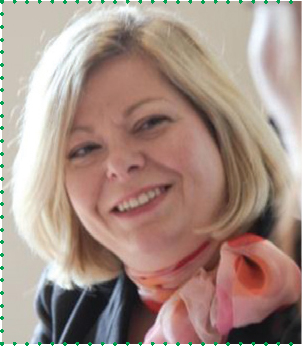
Health is one of the ‘hot topic’ issues for people in the UK. The way it is delivered has been changing, with large scale commissioning restructures bringing new Clinical Commissioning Groups and NHS England into being. Underlying this is a desire to keep improving patient care, and key is providing staff that are properly and appropriately skilled and trained.
Independent ambulance companies provide valuable services which support and strengthen the NHS, and help it deliver on its promises to patients, but negative and at times unfair press surround many of these services. One of these surrounds the issue over training standards.
There are a lot of myths circulating about independent ambulance services. Some of them are based on historic problems, and others just from misunderstandings between the independent and NHS sectors.
The modern independent ambulance service is as professional, caring, and as patient focused as any NHS or charity provider. What critics often forget is that from April 2011 independent ambulance providers have been regulated by the Care Quality Commission on exactly the same basis as the NHS ambulance trusts and there is an absolute ‘level playing field’ in terms of compliance and quality of patient service.
It is commonly said, especially amongst NHS staff, that independent ambulance staff are not as well trained as their NHS counterparts, but training is at the top of most companies' agenda. They know that well trained staff will be motivated staff, and where training flourishes, people flourish. There is a recognition that training will bring these benefits, which in turn has to be good for the patient.
The origins of the criticism of lesser training standards go back over a decade, when the IHCD qualifications (seen as the gold standard) were only available to NHS staff; however much as they wanted to be trained to the same level, independent companies were prevented from registering their staff for these qualifications. However, this is no longer the case, independent ambulance staff are able to register for IHCD qualifications and independent providers able to deliver them. The emergence of new qualifications on the national Qualification and Credit Framework means that providers of all types can deliver relevant accredited and nationally recognised training.
Standardising levels of training across the industry is a top priority for the IAA, which has been leading the process for members. In the autumn of 2013, the IAA set up a training sub-group, with one of its remits to ‘be bold’. I lead the group which was tasked to produce a standard, voluntary framework to ensure that staff who work in the independent sector were at least as skilled as their NHS counterparts. Increasingly, commissioners are confused with standards of skills and training within the pool of suppliers, whether they are NHS, voluntary or independent. Many NHS trusts call their staff different names and move them across sector, with their basic training being nonstandard and more recently, non-accredited.
As the College of Paramedics will testify, with the shortage of paramedics in the UK, and the increase in usage of emergency care assistants (ECAs) rather than ambulance technicians, there is a shortage of skills in the sector. The ability for the independent sector to ‘home grow’ staff from ECA to paramedic gives us the scope to support our commissioners in the same way as the NHS. The gap is closing, the independent sector is less and less seen as a second-choice employer to the NHS.
But in order to close this gap the independent sector must standardise training standards.
Training framework
The IAA Training sub-group is shortly to provide a sector-wide framework which contains guidance for members. Its purpose is to provide a standardised approach to the core content and delivery of statutory and mandatory training to support transferability of skills and competence, reducing the need for staff to repeat training as they move between organisations.
It also assists in the standardisation of the key work roles which frequently feature as part of commissioner's requests. With the support from authorities and experts who advised the framework's development, and an understanding of specific legal and policy requirements, the framework will greatly help member organisations to understand base line training requirements for each role. It draws on existing qualifications and utilises accredited courses to bulletproof staff's qualifications.
Aims of the framework
Proposed staff classifications
One of the important aspects of this framework is to provide a progression pathway through the various career levels. Where relevant to ensure that accredited qualifications are embedded in the pathway. It has been necessary to undertake an assessment of the various job roles within the sector and align with career levels and associated job specification. The career pathway corresponds with the NHS Career Levels framework and allows for a clear interrelationship between the two.
Level 1
Administrative, office or courier staff would be included in this category, where there is no patient contact. Therefore, the level of training will be non-clinical and this is an important benchmark for the CQC when auditing independent providers.
Level 2
Non-emergency patient transport staff, i.e. ambulance care assistants, patient transport service staff, patient transport assistants, ambulance transport assistants.
Level 3
Intermediate tier (high dependency), special services (bariatric), critical care transfers (non paramedic) in the form of ambulance support workers, emergency care assistants, IHCD ambulance technicians and registered nurses.
Level 4, 5 and 6
Front-line services and critical care transfers (clinical) in the form of emergency care assistants crewing with IHCD ambulance technicians, registered nurses and ihcd paramedics.
Emergency medical technicians
The training framework will reflect the types of work independent providers are involved in and also reviews the title of ‘emergency medical technician’ or ‘EMT’. Traditionally, providers taught staff on 5 day ‘in house’ EMT courses, who in turn called themselves ‘technicians’. This terminology became confused with the IHCD Ambulance Aid qualification (but commonly referred to as ambulance technician), which is a much more in depth course. Therefore, to give integrity to the framework, the proposal will be to cease using the term EMT within the independent sector.
Minimum core training standard—‘Induction’
The minimum training standard will include the following 10 core mandatory subjects, in align with the Skills for Health framework:
This will be further divided into additional subjects that are mandatory for staff at different levels. The framework will give detail about which level of crew should undertake learning in each subject.

Clinical standards
The framework moves on to supply information about which qualifications are recognised in which level. The framework draws on the qualifications currently available that are accredited, for example, QCF qualifications in Emergency Care Assistance, specialist recognised qualifications such as IHCD and Edexcel/BTEC courses such as FPOS Basic, Intermediate and Enhanced. Other courses will be accepted as the core building blocks to build up to the required level, particularly blended learning programmes which enable students to earn as they learn, and minimise the disruption caused by attending full-time courses.
‘The modern independent ambulance service is as professional, caring, and as patient focused as any NHS or charity provider’
Ultimately the IAA's Training Framework will reinforce the importance of providing a consistent and standardised approach to the focus and delivery of skills and training, enabling UK-wide recognition of training standards in the independent ambulance sector which is patient focused, educationally sound and valued by commissioners. Using the IAA's Training Framework and with support of similarly clinically focused groups such as the College of Paramedics and their Curriculum Guidance, greater transparency in and across organisations will be achieved, improving compliance and vital contribution to safe patient care.

